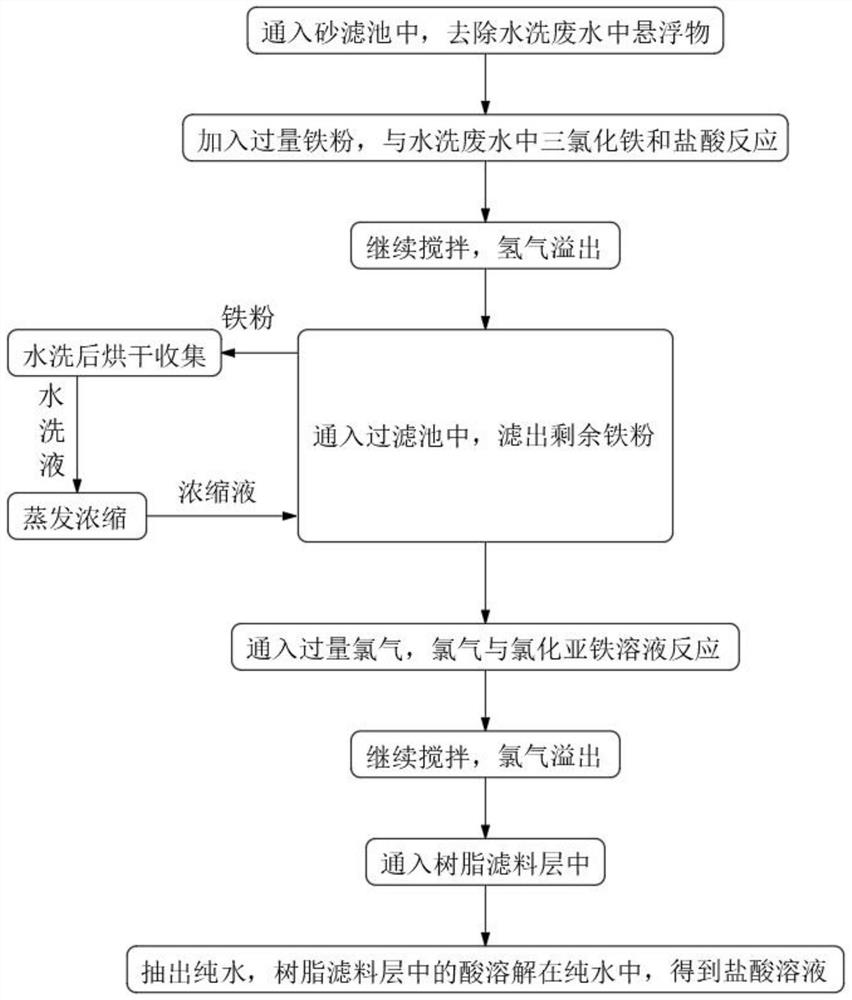Method for removing acid from chlorobenzene washing wastewater
A technology for chlorinated benzene and waste water, applied in the field of acid removal, can solve the problems of inability to separate ferric chloride and hydrochloric acid for reuse, and achieve the effect of increased content and high conversion rate
- Summary
- Abstract
- Description
- Claims
- Application Information
AI Technical Summary
Problems solved by technology
Method used
Image
Examples
Embodiment Construction
[0024] The following will clearly and completely describe the technical solutions in the embodiments of the present invention with reference to the accompanying drawings in the embodiments of the present invention. Obviously, the described embodiments are only some, not all, embodiments of the present invention.
[0025] see figure 1 , an embodiment provided by the invention: a method for removing acid in chlorinated benzene washing wastewater, comprising the steps of:
[0026] S1: passing the chlorinated benzene washing wastewater into the sand filter tank, removing the suspended matter in the chlorinated benzene washing wastewater, and obtaining the washing wastewater without suspended matter;
[0027] S2: adding excess iron powder to the washing wastewater, the iron powder first reacts with ferric chloride in the washing wastewater, and then reacts with hydrochloric acid in the washing wastewater to obtain ferrous chloride solution and hydrogen;
[0028] In order to conver...
PUM
| Property | Measurement | Unit |
|---|---|---|
| melting point | aaaaa | aaaaa |
| boiling point | aaaaa | aaaaa |
| flash point | aaaaa | aaaaa |
Abstract
Description
Claims
Application Information
 Login to View More
Login to View More - R&D
- Intellectual Property
- Life Sciences
- Materials
- Tech Scout
- Unparalleled Data Quality
- Higher Quality Content
- 60% Fewer Hallucinations
Browse by: Latest US Patents, China's latest patents, Technical Efficacy Thesaurus, Application Domain, Technology Topic, Popular Technical Reports.
© 2025 PatSnap. All rights reserved.Legal|Privacy policy|Modern Slavery Act Transparency Statement|Sitemap|About US| Contact US: help@patsnap.com

